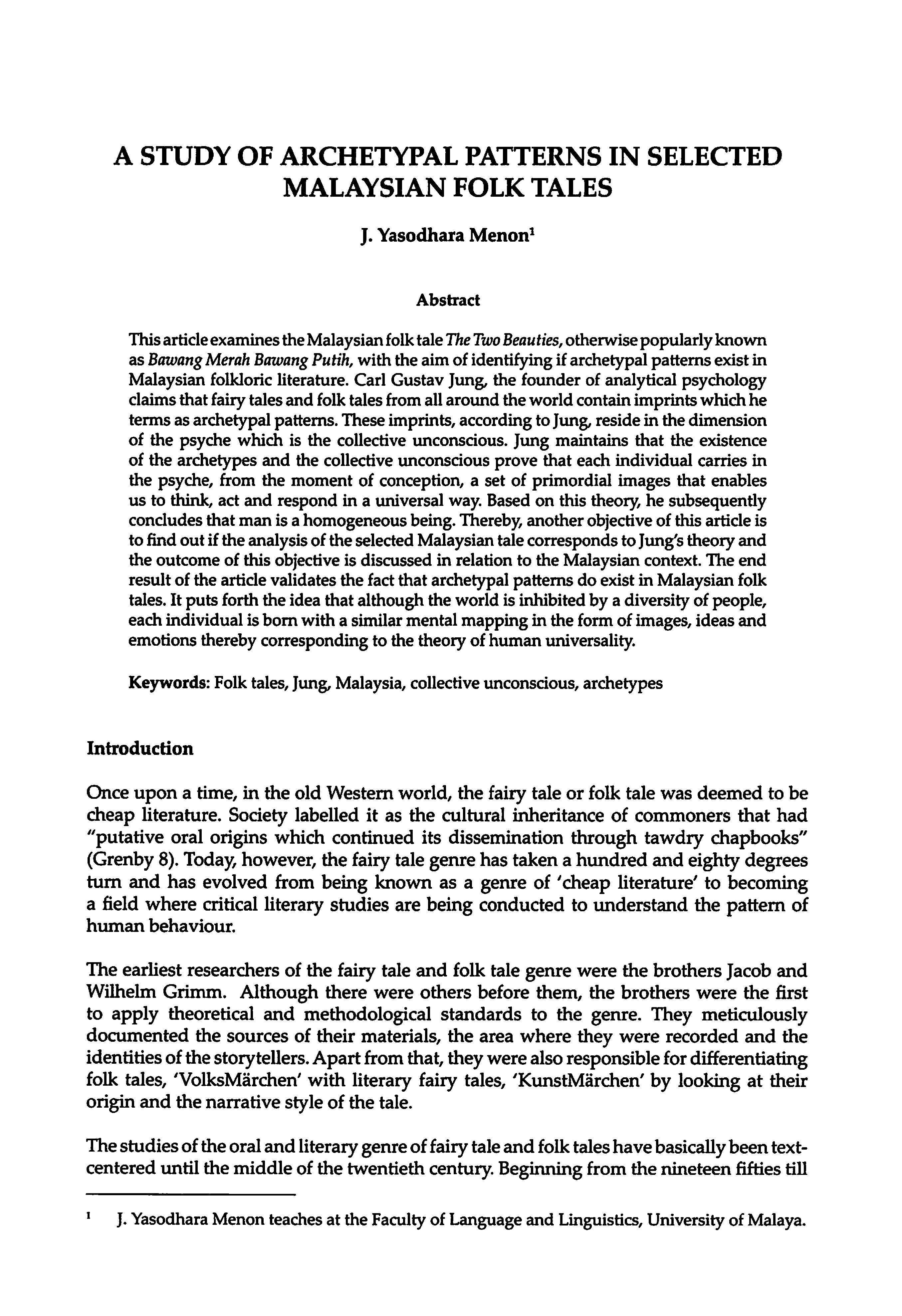A STUDY OF ARCHETYPAL PATTERNS IN SELECTED MALAYSIAN FOLK TALES
Main Article Content
Abstract
This article examines the Malaysian folk tale The TwoBeauties, otherwise popularly known as Bawang Merah Bawang Putih, with the aim of identifying if archetypal patterns exist in Malaysian folkloric literature. Carl Gustav Jung, the founder of analytical psychology claims that fairy tales and folk tales from all around the world contain imprints which he terms as archetypal patterns. These imprints, according to Jung, reside in the dimension of the psyche which is the collective unconscious. Jung maintains that the existence of the archetypes and the collective unconscious prove that each individual carries in the psyche, from the moment of conception, a set of primordial images that enables us to think, act and respond in a universal way. Based on this theory, he subsequently concludes that man is a homogeneous being. Thereby, another objective of this article is to find out if the analysis of the selected Malaysian tale corresponds to Jung's theory and the outcome of this objective is discussed in relation to the Malaysian context. The end result of the article validates the fact that archetypal patterns do exist in Malaysian folk tales. Itputs forth the idea that although the world is inhibited by a diversity of people, each individual is born with a similar mental mapping in the form of images, ideas and emotions thereby corresponding to the theory of human universality.

